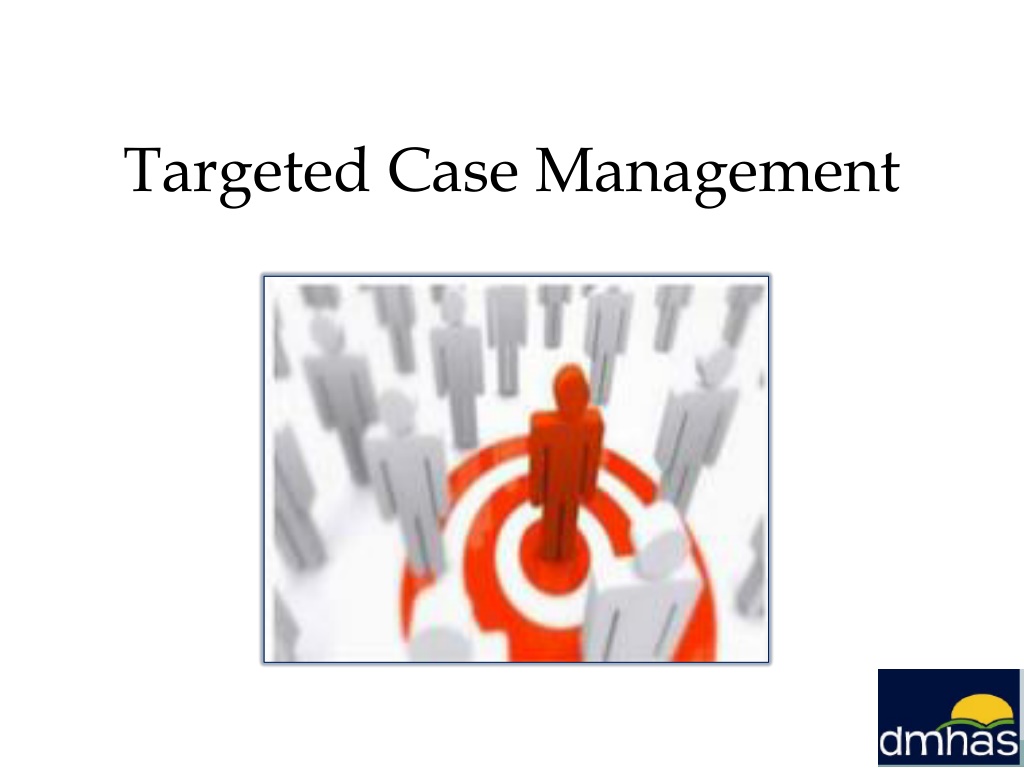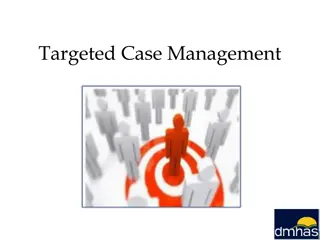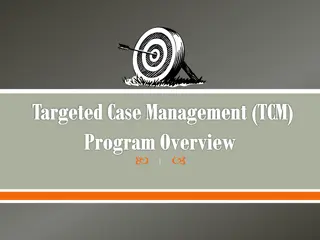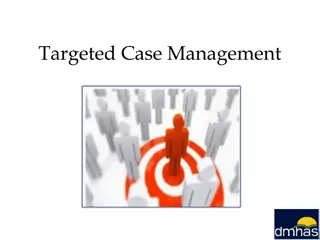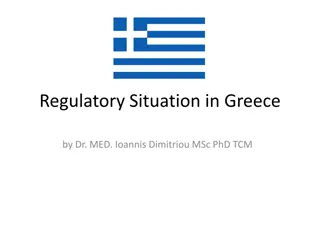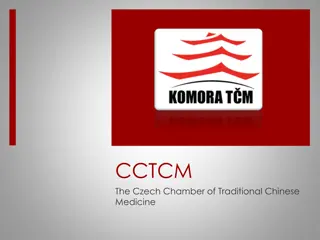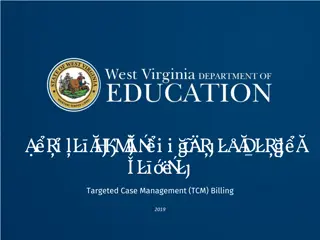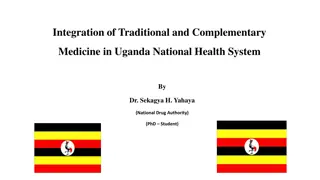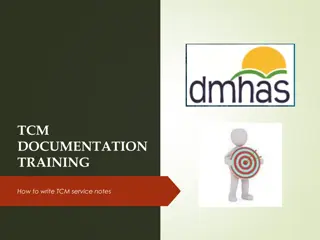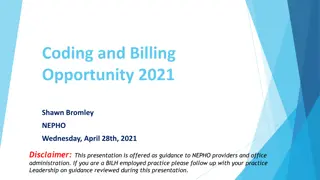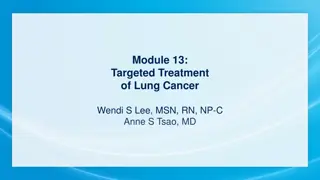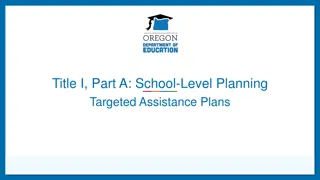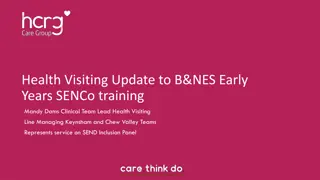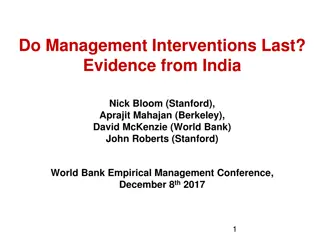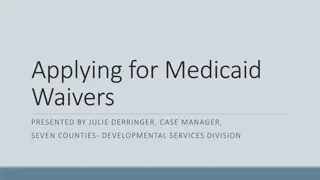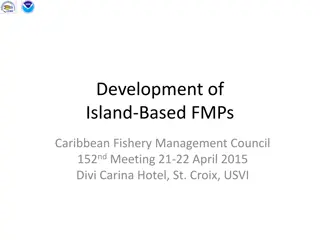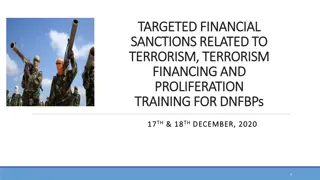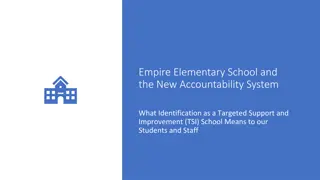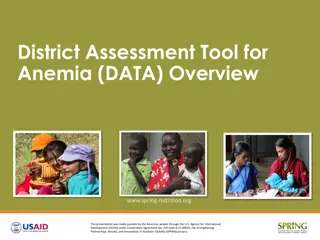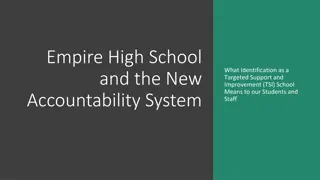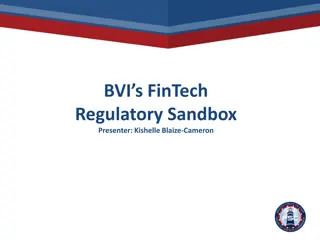Understanding Targeted Case Management (TCM) Services
Targeted Case Management (TCM) is a specialized service designed to assist individuals in accessing necessary medical, clinical, social, and educational services to enhance their quality of life. TCM services are reimbursable through Medicaid and are defined within the Medicaid State Plan Amendment (SPA). The target population for TCM typically includes individuals with serious chronic mental illnesses, substance use disorders, and co-occurring mental health conditions. TCM providers follow a structured continuum of assessment, planning, linkage, support, and advocacy activities to ensure clients receive appropriate care and support to prevent hospitalization and improve community participation.
Download Presentation

Please find below an Image/Link to download the presentation.
The content on the website is provided AS IS for your information and personal use only. It may not be sold, licensed, or shared on other websites without obtaining consent from the author. Download presentation by click this link. If you encounter any issues during the download, it is possible that the publisher has removed the file from their server.
E N D
Presentation Transcript
What We Will Cover in This Training Definition of TCM The Targeted Population TCM providers TCM levels of Care TCM Service Codes CLAMP TCM Documentation Record Retention Fiscal Overview RMTS
What is Targeted Case Management? Targeted Case Management (TCM) is a set of services provided to a Target Population that helps our clients gain access to needed medical, clinical, social and educational services to improve the quality of their lives. TCM services are reimbursable through Medicaid.
What is Targeted Case Management? TCM in Connecticut is defined within the Medicaid State Plan Amendment (SPA) which has been approved by the Centers for Medicare and Medicaid (CMS). In Ct. The Department of Social Services is the agency responsible for oversight of Medicaid and the SPA.
What is Targeted Case Management? The Medicaid State Plan Amendment (SPA) defines TCM services as: services furnished to assist individuals eligible under the State Plan in gaining access to needed medical, social, educational, and other services. The Medicaid Provider Manual defines case management services as the continuum of assessment, planning, linkage, support and advocacy activities systematically carried out by an individual case manager that are available to assist and enable an individual to gain access to needed medical, clinical, social, educational or other services. Medicaid pays to keep people from going to the hospital by continually assessing their needs, writing a plan to address those needs and keeping them linked and engaged in services designed to reduce symptoms and maximize participation in community life.
Who is the Target Population for TCM? DSS defines the TCM target population based on ICD10 diagnosis codes. In Connecticut, the TCM target population is defined as individuals with serious chronic mental illness inclusive of individuals with substance use disorders and co-occurring mental illness.
Who is the Target Population for TCM? DSS maintains an updated approved codes list in Table 17 at https://www.ctdssmap.com/CTPortal/P ortals/o/StaticContent/Publications/Fee Schedule Instructions.pdf
TCM Providers Qualified Providers must have training, experience and expertise working with their target population. Details on the requirements that staff members must have to provide TCM services are outlined in the Medicaid State Plan Amendment (SPA). On a quarterly basis, TCM providers enroll staff in the Random Moment Time Study (RMTS) as part of the rate setting process.
TCM Levels of Care DMHAS has identified the following levels of care (LOC) for which TCM is expected: Assertive Community Treatment Community Support Programs MH Case Management MH Intensive Residential MH Residential Support MH Supervised Apartments MH Supportive Housing MH Transitional Residential
TCM Service Codes DDAP TCM Codes: TCM01 face to face with client TCM02 on the phone with client TCM03 with collateral TCM04- Audio and Visual with the client (Effective November 1, 2020; can be used for dates of services beginning 3/18 to the present) All TCM services can occur in the context of these 4 codes
What are TCM Services? C L A M P Coordination Linking Accessing, Assessing and Advocacy Monitoring Planning When this set of services is included in the Treatment Plan, they should be documented and coded as TCM.
COORDINATING Coordinating Services, Resources &Plans Coordination of care that involves a person interacting with external resources. Coordinating referral or supports Coordinating schedules and appointments with outside agencies for or with the client. Coordinating a plan of services, reviewing services and activities to ensure that the plan continues to meet the wants and needs of the client.
COORDINATING Example: A client calls you complaining of a toothache and states his sister made an appointment with the family dentist 5 days from now. However, no one in the family is available to take the client to the dentist s office which is approximately 20 miles away. You call VEYO, a non-emergency medical transportation service. You provide VEYO with the necessary information and arrange for your client to get to and home from their dental appointment.
LINKING Linking to Services & Resources Linking a client to outside resources. Linking the client with providers and other agencies to obtain services which addresses the client s needs and helps them achieve the goals documented in their recovery plan.
LINKING Example: A client comes to your office stating he has been feeling bored and would like to get out into the community. You suggest volunteering. The client likes the idea and states he likes working with animals. You link him to the town s animal shelter after calling and speaking to the Director, who states they are currently looking for volunteers.
ACCESSING Linking and Referring to Needed Services Services that assist and enable the client to gain access and maintain needed medical, clinical, social, educational or other services.
ACCESSING Example: Your client calls you upset after talking to his landlord. The landlord is threatening to evict your client because he found out he has a cat. Your client has the cat as an emotional support animal for his anxiety around living alone. You help the client access legal help through Connecticut Legal Rights Project (CLRP) to discuss an accommodation to the landlord s no pets rule.
ASSESSING Comprehensive assessments at admission. Reassessments performed at least annually. Assessments and reassessments completed for the purposes of developing a treatment plan or a treatment plan update.
ASSESSING EXAMPLE: You conduct an annual reassessment of your client using the CASIG to determine which areas of need will be addressed in his upcoming IRP update.
ADVOCACY Helping a client obtain something they desire; eliminating a barrier.
ADVOCACY Example: Your client s landlord calls you stating he doesn t like the friends your client has- they are known in the housing community as having a reputation for damaging property and says your client is not allowed to have them at the apartment or he will evict your client. You advocate for his rights as a tenant.
MONITORING Monitoring progress of a treatment plan objective, clearly identified in the intervention as a monitoring activity, not routine follow-up. Activities are necessary to ensure the plan is implemented and adequately addresses the client s needs. Services in the recovery plan are adequate.
MONITORING Changes in the needs or status of the individual are reflected in the service plan. Adjustments in the plan and service arrangements with providers are made as necessary and as situations change with the client.
MONITORING Monitoring can be provided: Face to face or by telephone In a case conference with the client present Through collateral contact with family, friends, providers and others Conducted as frequently as prescribed in the recovery plan.
Monitoring Example: The case manager, as part of the treatment plan, is going to monitor his client s nutritional plan for his newly diagnosed diabetes on a bi-monthly basis. The case manager will monitor through client self-report and by reviewing grocery store receipts.
CONFUSION ABOUT MONITORING What it is & What it is not Monitoring involves active observation of the service plan to make sure it is being properly implemented and meets the needs of the client. Monitoring also involves consistent help in identifying problems, modifying plans, ensuring resources are available to achieve goals and/or the objective has been achieved, and monitoring the client s participation in the plan. Monitoring assures services are delivered as documented in the service plan, services in the plan are adequate for the client and that necessary adjustments are made in the service plan when changes are needed.
CONFUSION ABOUT MONITORING What it is & What it is not Confusion about the self administration of medication. Medication delivery is not a TCM activity. Nor is supervising/observing clients take their medication. The client needs to have full access to their medications and make a choice to take or not take them. The monitoring occurs when in the service plan it is written that the staff will monitor that client has taken their medication in a specific time frame (example; weekly) and that the staff person monitors via looking in the pill box or counting pills in a pill bottle.
PLANNING Planning with a client on any specific aspect of their goals and needs, or by participating in a treatment planning conference with a client, the client s other providers and any natural supports.
PLANNING Example: Your client tells you he would like to start working on a plan to get a job so he can have some extra money to do things with his kids during a comprehensive assessment. Your client has stated that he has been unable to keep a job in the past due to absenteeism. Specifically not having a routine and irregular sleep habits which makes it difficult to go to work and be productive. You discuss possible interventions to include on the plan including regulating caffeine and alcohol intake, developing a sleep routine to get up on time.
TCM DOCUMENTATION In order to use a TCM code there must be the following items; 1. Initial and Ongoing Assessments- these determine the need for any medical, social, educational and other services. Assessment activities include taking a client history, identifying needs, completing related documentation and gathering information from other sources. Reassessments occur at least annually but may be done more frequently. Includes a diagnosis. Have the client sign a release of information (ROI) for record reporting and DDaP.
The Assessment An analysis of the information gathered- it is a best practice to provide and analysis or formulation of the client s issues that are currently impacting their level of functioning in various Life Domains and recommendations for treatment and level of care based on the assessment information. Moves from the what (facts only) to the why (i.e., how you make sense of the data.) Hypothesis or best-guess as to what is going on Informed by both the person s understanding as well as by your professional opinion Information in summary should have a direct impact on the plan A well-written integrated summary is the BRIDGE between the data/assessment and the recovery plan!
TCM DOCUMENTATION 2. An Active Recovery Plan is developed from the assessment and substantiates ongoing necessity for the services that are the focus of your work with the client. Identifies areas of need Has TCM goals and objectives Has TCM interventions with anticipated duration, frequency, target dates and person(s) responsible. Client signature or evidence of client participation-Use quotes- Document why the client refuses to sign or refuses to participate if that is the case.
TCM DOCUMENTATION 3. The Progress Note provides an ongoing narrative of the interventions that you have utilized in your service delivery with the client. The activity provided must reference a Goal in the recovery plan. The services you provide should be reasonably expected to improve an aspect of the client s condition. Designed to reduce or control symptoms Prevent relapse or hospitalization Improve or maintain current level of functioning. The Intervention (What you did) and the client s Response to the intervention must be documented. The Plan for the next encounter must be documented.
Lets go back to the examples A client calls you complaining of a toothache and states his sister made an appointment with the family dentist 5 days from now. However, no one in the family is available to take the client to the dentist s office which is approximately 20 miles away. You call VEYO, a non-emergency medical transportation service. You provide VEYO with the necessary information and arrange for your client to get to and home from their dental appointment.
TCM DOCUMENTATION Writing the Note Goal I want to feel better so I can do things with my kids Ronald (name of client) called this counselor (job title) saying that the pain in his mouth has gotten worse. His sister made an appointment with Ron s family dentist but is unable to take him. This counselor let Ron know that because the appointment was so far out of town she would be unable to transport him but would call VEYO and see if they had the availability to provide the ride. This counselor called and was able to coordinate (TCM Service) the appointment. (Intervention) When this counselor called Ron back, he seemed relieved to be getting this taken care of but stated that he would have preferred that this counselor take him since he gets anxious at the dentist.(Response) I let Ron know I would come by his apartment when he gets back from his appointment to make sure he has everything he needs to be comfortable. (Plan for the next session) Sally Shine, MSW (name of person providing the service and job title/credentials) 2/25/2021 (Date) Start 9:32-End 10:04 (Units) Total 32 minutes (Duration) collateral in staff office TCM03 (Location and code)
Lets go back to the example A client comes to your office stating he has been feeling bored and would like to get out into the community. You suggest volunteering. The client likes the idea and states he likes working with animals. You link him to the town s animal shelter after calling and speaking to the Director, who states they are currently looking for volunteers.
TCM DOCUMENTATION Writing the Note Goal I want to make friends and get out more Brian (name of client) came to this case manager s (job title) office appearing depressed, stating he has been feeling anxious and isolated since he doesn t have many opportunities to get out of the house. This case manager discussed linking (TCM Service) him to the Town Animal Shelter to volunteer since he likes animals. You let him know you spoke with them and they especially need help on the weekends. (Intervention) Brian was interested and happy that he could still attend his outpatient appointments during the week without interference. He was concerned that his allergies might be a problem. (Response) Plan is meet with Brian Thursday to set up an appointment to view the shelter and meet the Director. (Pan for next session) Deb Downy, Case Manager (Name of person providing the service and job title/credentials) 1/10/2021 (Date) Start 10:05- End 10:48 (Units) Total 33 minutes (Duration) Face to Face in staff office TCM01 (Location and code)
Lets go back to the examples Your client calls you upset after talking to his landlord. The landlord is threatening to evict your client because he found out he has a cat. Your client has the cat as an emotional support animal for his anxiety around living alone. You help the client access legal help through Connecticut Legal Rights Project (CLRP) to discuss an accommodation to the landlord s no pets rule.
TCM DOCUMENTATION Writing the Note GOAL I want to live on my own in an apartment and not have roommates Charlie (name of client) appeared upset during our telehealth appointment. The landlord came into the apartment to fix a window and discovered that he has a cat. The landlord stated that animals were not allowed and he would evict Charlie if he didn t get rid of the cat. Charlie explained that he needs the cat to help manage his anxiety and has documentation from his doctor that the cat is essential to his emotional support. This clinician (job title) assured him that he has rights to a reasonable accommodation as a person with a disability. This clinician informed him about CLRP and how they help people with landlord issues around their housing. (Intervention) Charlie appeared to calm down when he heard he has a right to ask the landlord to waive the no Pets rule due to his disability. (Response) Appointment at 3pm today to help access (TCM Service) CLRP regarding his accommodation issue. (Plan for next session) Zoe Zoolander, LPC Primary Clinician (Name of person providing the service and job title/credentials) 3/28/2021 (Date) start 1:04-1:22 (Units) total 18 minutes (Duration) Audio and Visual staff officeTCM04 (location and code)
Lets go back to the examples You conduct an annual re-assessment of your client using the CASIG to determine which areas of need will be addressed in his upcoming IRP update.
TCM DOCUMENTATION Writing the Note Goal I want to feel better and not feel so tired all the time This clinician ( Job title) administered the CASIG to assess Mary s (client name) health status and assess(TCM Service) any changes that need to be addressed in her IRP.(Intervention) Mary reluctantly admitted that she hashad an increase in her anxiety and depression. She has not been sleeping well for a few months butdoes not want to take any more medications. Due to not being able to get out of the house much and not seeing her daughter, Mary worries about her family and has increasedher smoking and drinkingand other bad habits. She appeared interested in some alternatives to medication to manage her symptoms and develop better sleep habits. (Response) Meet next Wednesday to develop her treatment plan in these areas. (Plan for next session) Addie Arlington, MSW (Name of person providing the service and Job Title/Credentials) 3/28/21 (Date) Start 10:15-10:47 (Units) Total 32 minutes (Duration) Face to Face staff office TCM01. (Location and code)
Lets go back to the examples Your client s landlord calls you stating he doesn t like the friends your client has- they are known in the housing community as having a reputation for damaging property and says your client is not allowed to have them at the apartment or he will evict your client. You advocate for the client s rights as a tenant.
TCM DOCUMENTATION Writing the Note Goal I want to make some new friends and have a girlfriend to do things with This Counselor (Job Title) received a call from Jimmy s (client name) landlord stating he saw some people in his apartment that are known to take advantage of people with a permanent place to live and trash the apartment until the police get involved and that if he sees them there again he will evict Jimmy. Thiscounselor advocated (TCM Service) for Jimmy s rights as a tenant to have visitors of his choosing to hisplace. This counselor did agree to remind Jimmy that he needs to be responsible for the actions of his guests and to make him aware that there have been issues with other landlords in the past and that any issues may put his housing in jeopardy. (Intervention) The landlord seemed satisfied that his concerns were heard and that this counselor would address that issue with him. (Response) Will call client tomorrow to discuss the landlord s issue and possible interventions. (Plan for the next session) Gail Anderson, Rehabilitation Counselor (Name of person providing the service and Job Title/Credentials) 2/25/21(Date) Start 9:42-9:57 (Units) Total 14 minutes (Duration) collateral phone call in officeTCM03(location and code)
Lets go back to the examples The case manager, as part of the treatment plan, is going to monitor his client s nutritional plan for his newly diagnosed diabetes on a bi-monthly basis. The case manager will monitor through client self- report and by reviewing grocery store receipts.
TCM DOCUMENTATION Writing the Note Goal I want to get off this medication and control my diabetes through my diet and exercise. This case manager (Job Title) met with Bob (client name) to monitor (TCM Service) his adherence to his new diet after one month. Reviewed what meals the client was cooking and looked over his grocery receipts to monitor what foods were being purchased. (Intervention) Bob expressed that he doesn t like cooking breakfast in the morning and is still eating cereal. He also said he is still hungry after dinner and has been snacking more. (Response) This case manager suggested taking a walk after dinner to get some exercise.Meet next week to look at alternative breakfast foods and activities to keep fromsnacking. (Plan for next session) Tom Hawke, Case Manager (Name of person providing the service and Job Title/credentials) Feb. 12,2021 (Date) Start 1:54-2:46 (Units) Total 52 minutes (Duration) face to face in client s apartment TCM01 (location and code)
Lets go back to the examples Your client tells you he would like to start working on a plan to get a job so he can have some extra money to do things with his kids during a comprehensive assessment. Your client has stated that he has been unable to keep a job in the past due to absenteeism. Specifically not having a routine and irregular sleep habits which makes it difficult to go to work and be productive. You discuss possible interventions to include on the plan including regulating caffeine and alcohol intake and developing a sleep routine to get up on time.
TCM DOCUMENTATION Writing the Note Goal I need money so I can give my kids the things they need This social worker (job title) met with Kevin (Name of client) following his vocational assessment. After reviewing Kevin s job readiness, it was determined Kevin had several areas to work on to be successful at maintaining employment. Kevin was willing to look at a plan (TCM Service) to make some changesregarding his sleep routine We came up with a plan eliminate caffeine after 10am, reduce his alcohol to 2 beers per night during the week and to consistently go to bed by 11pm and set an alarm clock to wake up by 7am (Intervention). Kevin was reluctant to getting up so early but was willing to try this for onemonth while he looks for a job. (Response) Will meet next Wednesday and review adherence to the plan and make any adjustments. (Plan for the next session) Brenda Reddington, LMSW (Name of person providing the service and job title/credentials) 3/02/21 (Date)10:05- 10:55(Units) 50 minutes (Duration) Face to Face staff office TCM01 (location and code)
TCM DOCUMENTATION Writing the Note Progress Notes: 1. Tell a story- a good story has a beginning, middle and end. 2. Provide a narrative of the objectives and interventions that have been worked on. 3. Details the client s progress in taking small steps to achieve life goals that are important to them. 4. Provides a summary of the work and progress that has been made for the next Recovery Plan update.
TCM DOCUMENTATION Writing the Note Services to clients who have no assessment, no treatment plan, or an expired treatment plan cannot be billed. Services to clients in an inpatient setting, nursing home, or jail cannot be billed. Double billing is prohibited. Please ensure that the service location is input into DDaP.
